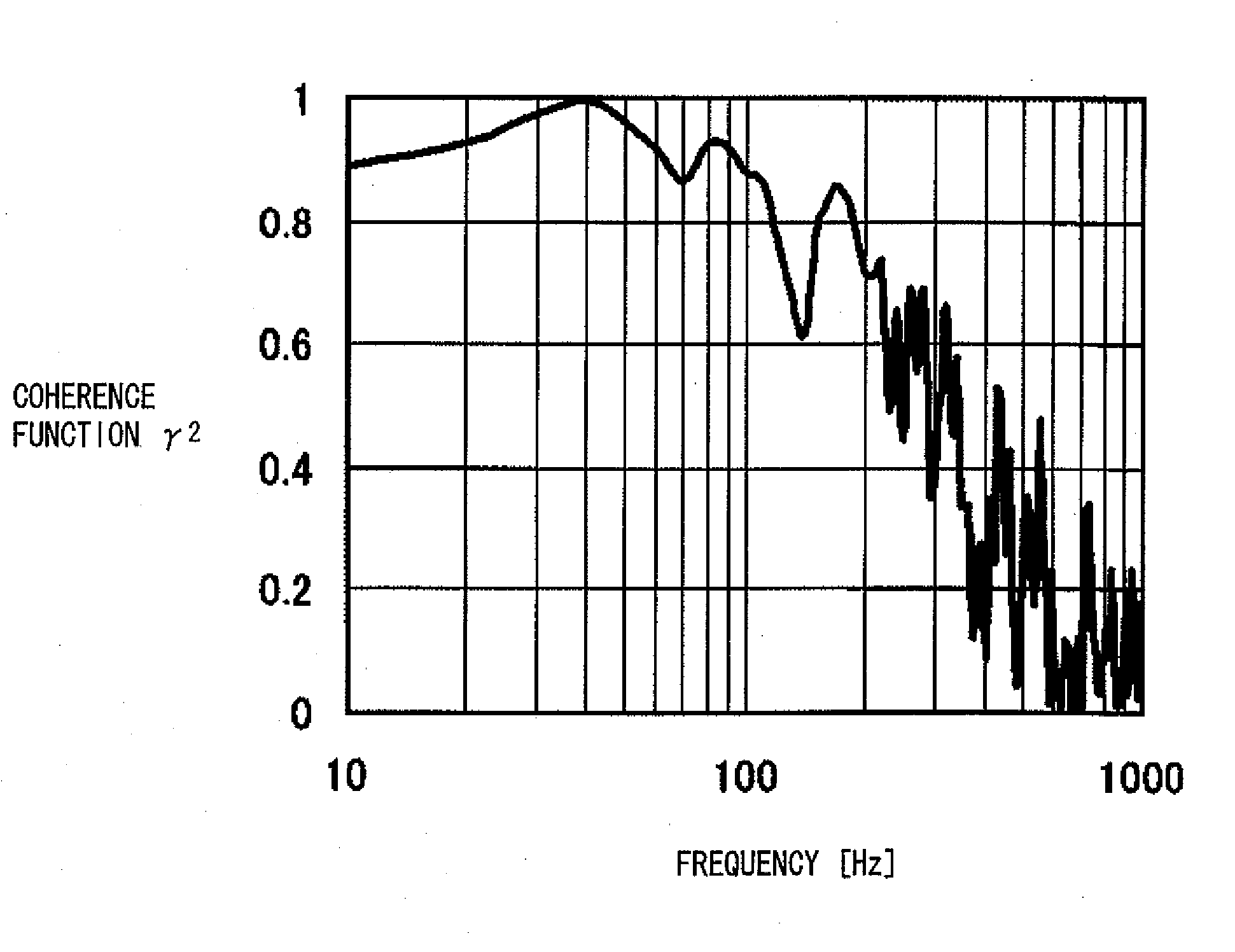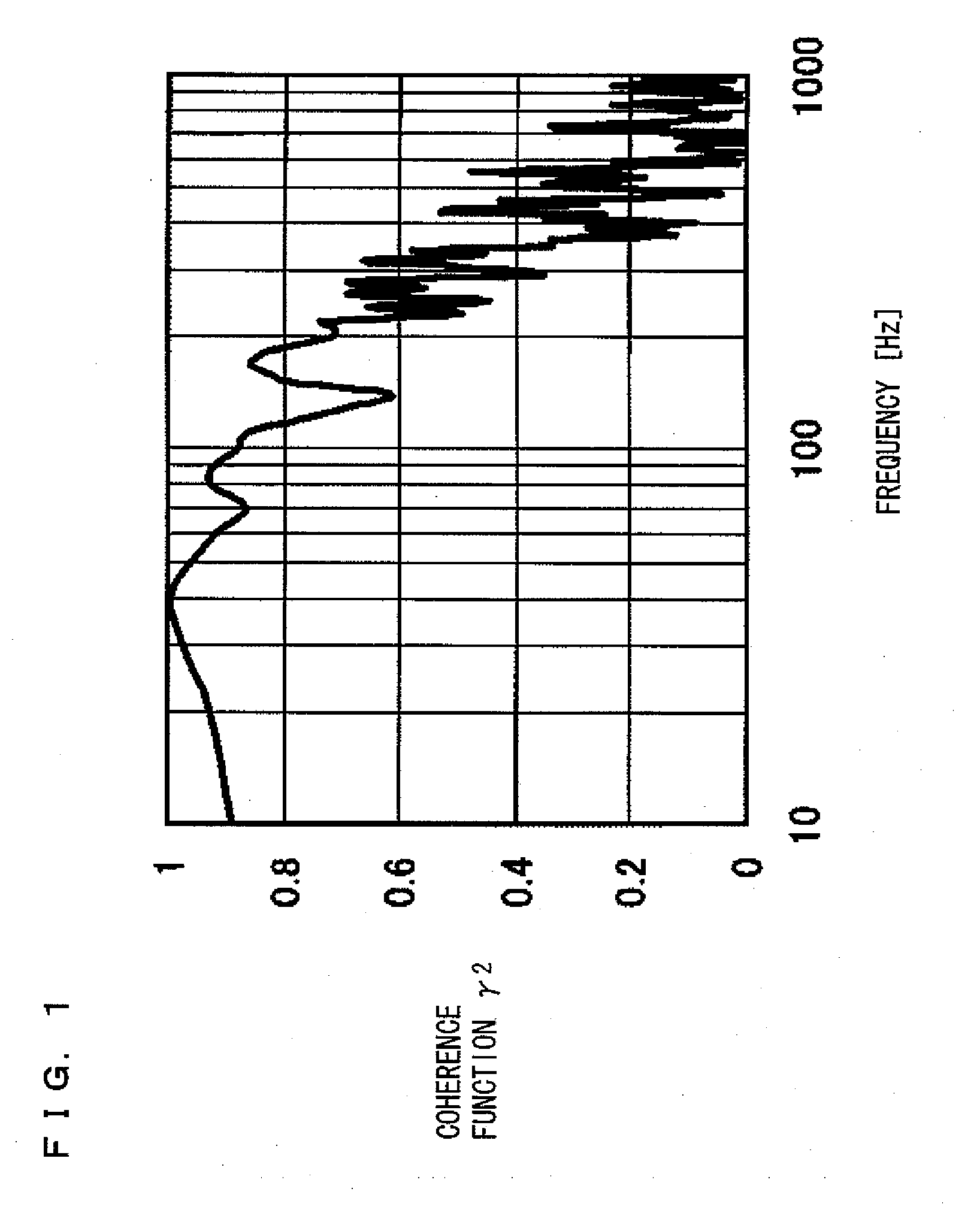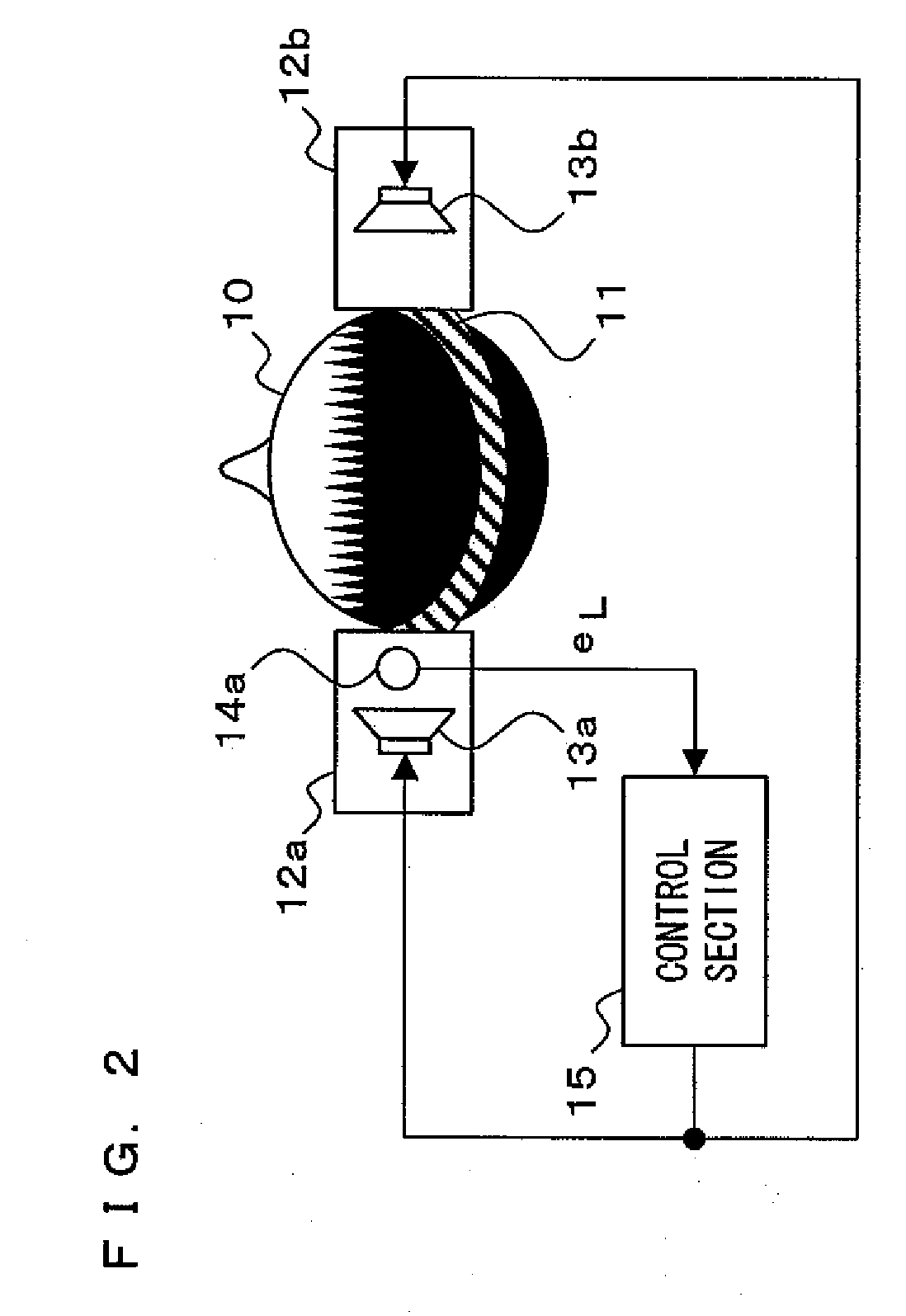Noise control device
a technology of noise control and noise reduction, which is applied in the direction of noise generation, ear treatment, instruments, etc., can solve the problems of deteriorating noise reduction effect, achieve the effect of preventing an increase in input/output delay, noise reduction effect, and reducing nois
- Summary
- Abstract
- Description
- Claims
- Application Information
AI Technical Summary
Benefits of technology
Problems solved by technology
Method used
Image
Examples
first embodiment
[0103]Hereinafter, a noise control device according to a first embodiment of the present invention will be described with reference to the drawings. First, a configuration of the noise control device according to the present embodiment will be described with reference to FIG. 2. FIG. 2 shows the configuration of the noise control device according to the first embodiment. Note that, FIG. 2 shows a configuration in the case where the noise control device according to the present embodiment is applied in a headphone apparatus. FIG. 2 and later-described FIGS. 3, 7 and 8 each are a diagram which shows a view seen from above a head of a user 10 and in which the user 10 faces upward.
[0104]As shown in FIG. 2, the noise control device comprises a headband 11, a left ear case 12a, a right ear case 12b, a left ear speaker 13a, a right ear speaker 13b, a left ear microphone 14a and a control section 15. The left ear case 12a is placed near a left ear of the user 10, and the left ear case 12a h...
second embodiment
[0137]Hereinafter, a noise control device according to a second embodiment of the present invention will be described with reference to the drawings. Usually, in a high frequency band, a phase lag of each of the aforementioned electroacoustic transfer functions HL and HR occurs. Accordingly, there is a case where even if the transfer function CL of the control section 15 described in the first embodiment is set so as to have the inverse characteristic to that of the electroacoustic transfer function HL, the transfer function CL does not have the inverse characteristic in a high frequency band, whereby the noise reduction effect decreases. For this reason, in the present invention, for a frequency band which is higher than a predetermined frequency and in which a phase lag of the electroacoustic transfer function occurs, a control is separately performed by using a high frequency control section for which a filter coefficient based on the electroacoustic transfer function having the ...
third embodiment
[0148]Hereinafter, the noise control device according to a third embodiment of the present invention will be described with reference to the drawings. The noise control device according to the present embodiment is, as compared to the above second embodiment, further capable of producing an optimal noise reduction effect in accordance with an arrival direction of noise.
[0149]A configuration of the noise control device according to the third embodiment will be described with reference to FIG. 12. FIG. 12 shows a configuration of the noise control device according to the third embodiment. As shown in FIG. 12, the noise control device comprises the headband 11, the left ear case 12a, the right ear case 12b, the left ear speaker 13a, the right ear speaker 13b, the left ear microphone 14a, the right ear microphone 14b, the control section 15a, the adders 21a and 21b, the left ear high frequency control section 25a, the right ear high frequency control section 25b, and a switching section...
PUM
 Login to View More
Login to View More Abstract
Description
Claims
Application Information
 Login to View More
Login to View More - R&D
- Intellectual Property
- Life Sciences
- Materials
- Tech Scout
- Unparalleled Data Quality
- Higher Quality Content
- 60% Fewer Hallucinations
Browse by: Latest US Patents, China's latest patents, Technical Efficacy Thesaurus, Application Domain, Technology Topic, Popular Technical Reports.
© 2025 PatSnap. All rights reserved.Legal|Privacy policy|Modern Slavery Act Transparency Statement|Sitemap|About US| Contact US: help@patsnap.com



